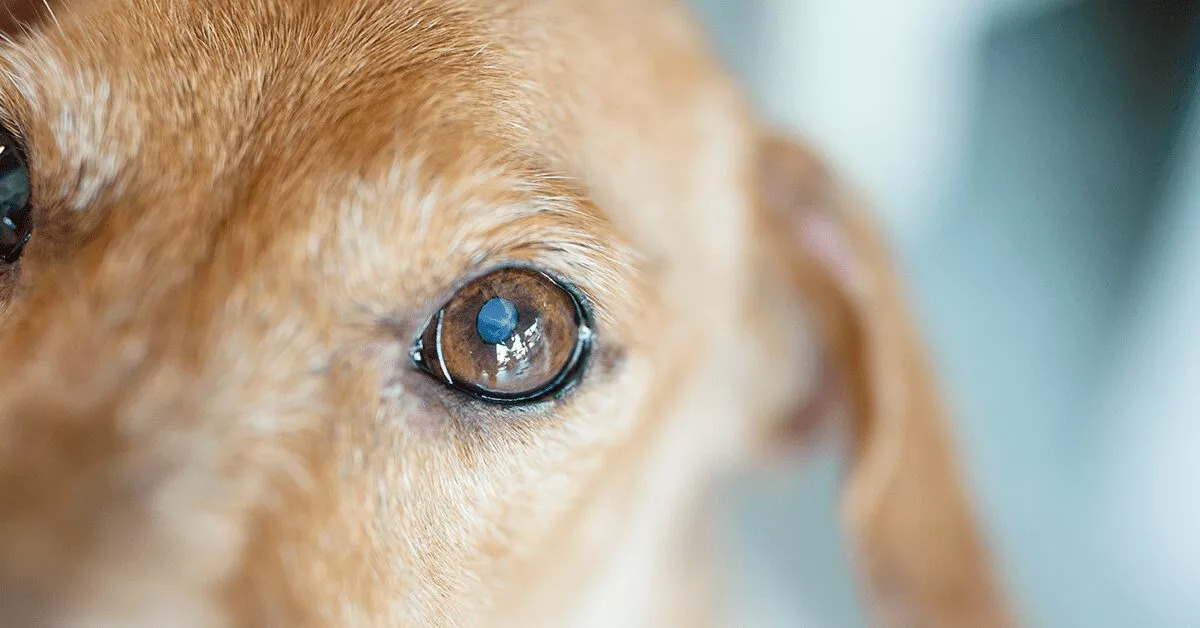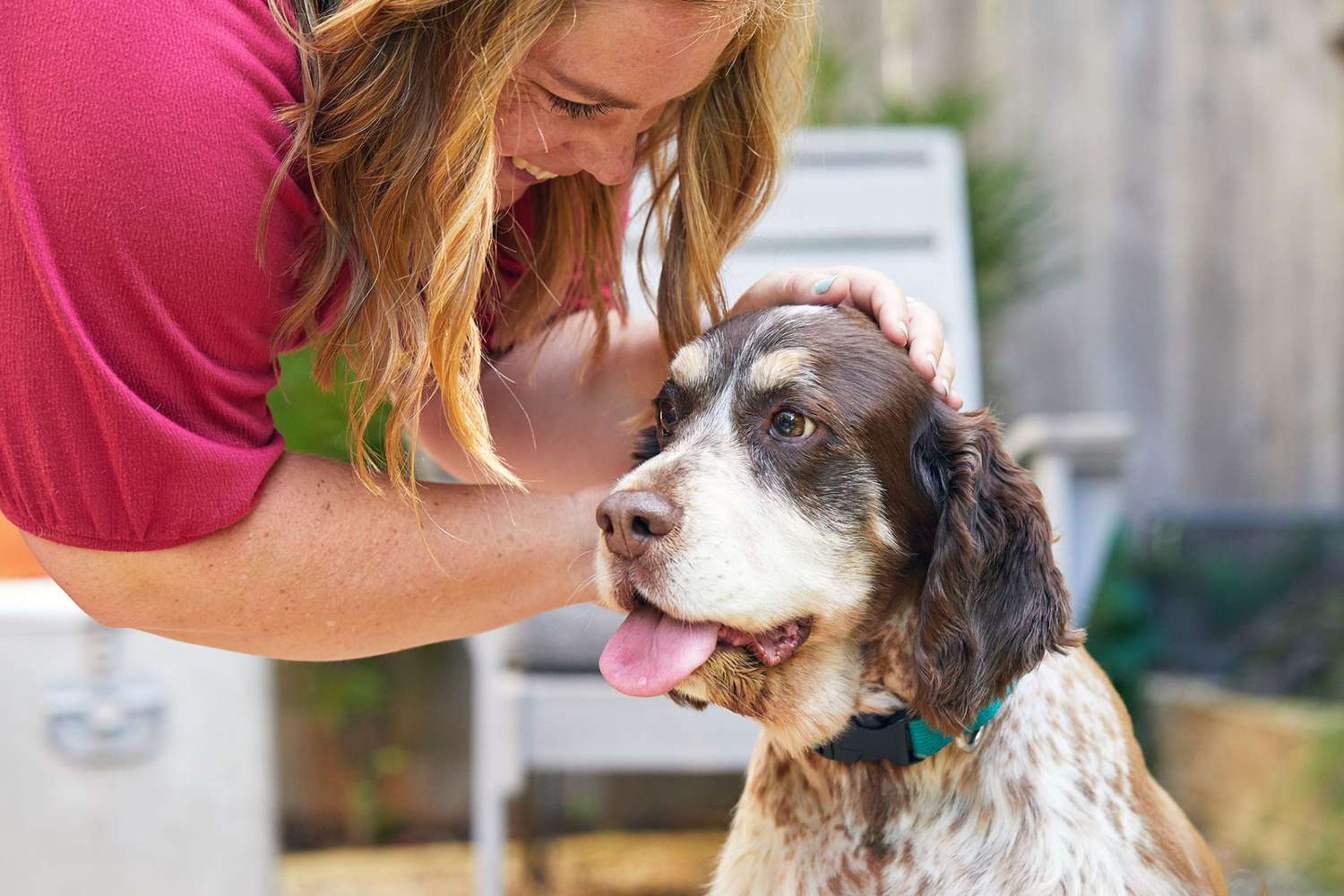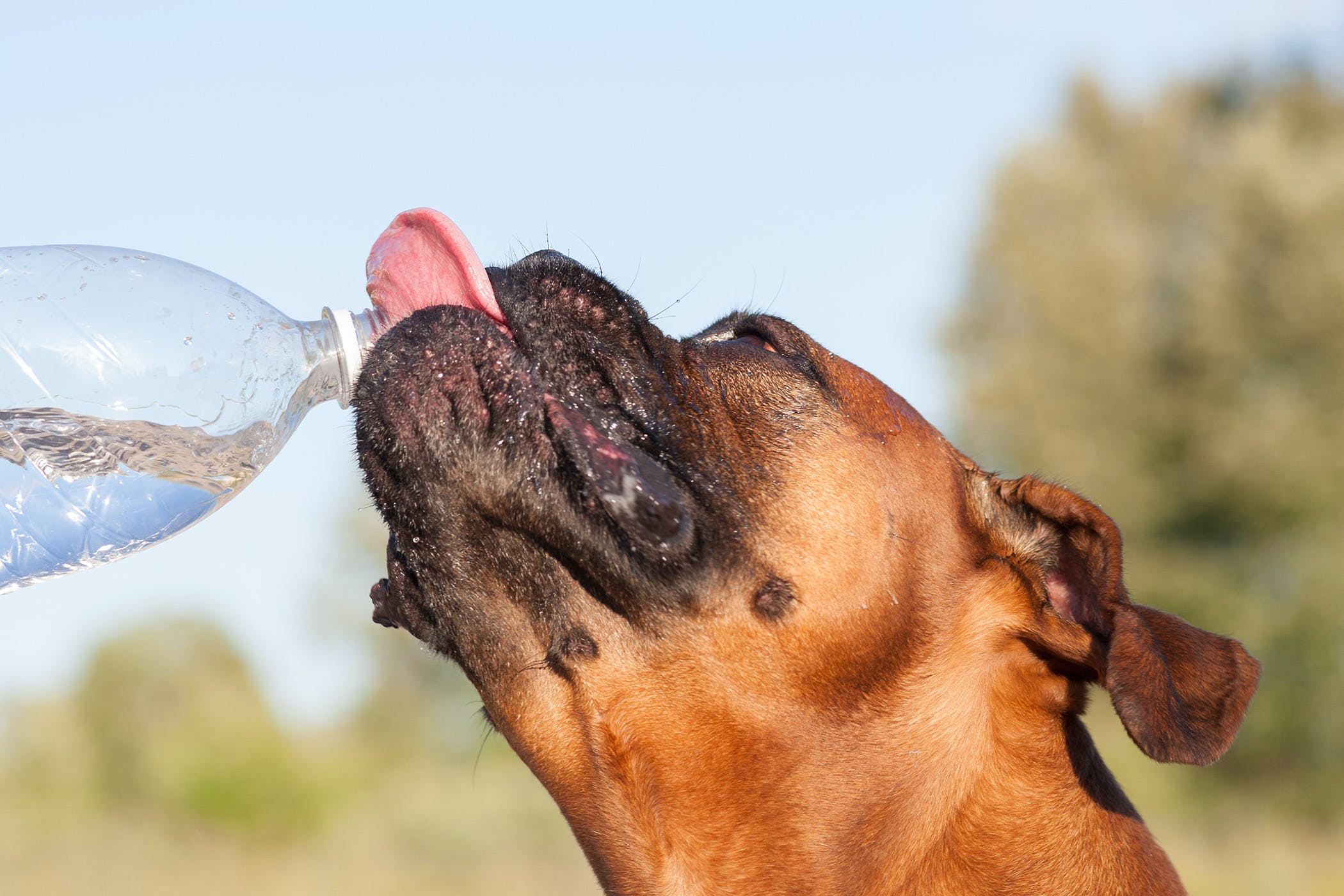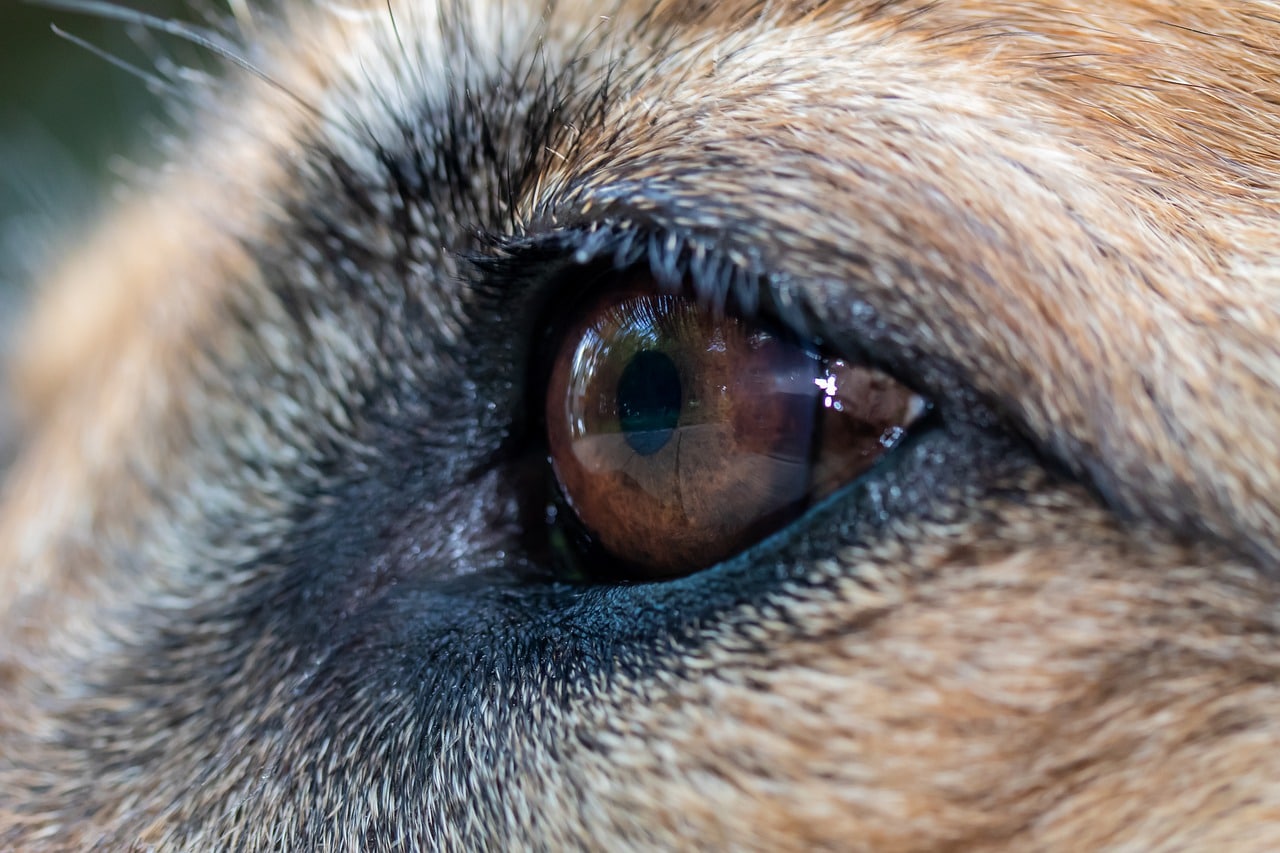Home>Health & Wellness>Common Health Issues>Why Do Dogs With Diabetes Pee In The House


Common Health Issues
Why Do Dogs With Diabetes Pee In The House
Published: January 30, 2024
Learn about common health issues in dogs, including why dogs with diabetes may pee in the house. Understand the causes and how to manage these conditions effectively.
(Many of the links in this article redirect to a specific reviewed product. Your purchase of these products through affiliate links helps to generate commission for Pawsomeoldies.com, at no extra cost. Learn more)
Table of Contents
Introduction
Diabetes is a common health issue that affects not only humans but also our beloved canine companions. When a dog is diagnosed with diabetes, it can lead to various changes in their behavior and bodily functions. One of the noticeable symptoms is increased urination, which can often result in accidents inside the house. Understanding why dogs with diabetes pee in the house is crucial for pet owners to provide the best care and support for their furry friends.
The impact of diabetes on a dog's urinary habits can be perplexing and frustrating for pet parents. However, by delving into the underlying causes and learning how to manage this aspect of the condition, it is possible to improve the quality of life for dogs living with diabetes. In this article, we will explore the intricacies of diabetes in dogs, the symptoms associated with the condition, the reasons behind increased urination, and effective strategies for managing this common issue. Let's embark on a journey to gain a deeper understanding of why dogs with diabetes may exhibit changes in their urination patterns and how we can best support them through this challenging time.
Read more: Why Do Dogs With Diabetes Lose Weight
Understanding Diabetes in Dogs
Diabetes mellitus, commonly referred to as diabetes, is a complex and chronic health condition that can affect dogs in a manner similar to humans. This metabolic disorder occurs when the pancreas fails to produce enough insulin or when the body becomes resistant to the insulin being produced. Insulin plays a crucial role in regulating blood sugar levels, allowing cells to utilize glucose for energy. When this process is disrupted, it leads to an imbalance in blood sugar levels, causing a range of symptoms and complications.
In dogs, diabetes is classified into two main types: Type 1 and Type 2. Type 1 diabetes occurs when the pancreas is unable to produce sufficient insulin, leading to an absolute insulin deficiency. On the other hand, Type 2 diabetes involves insulin resistance, where the body's cells do not respond effectively to the insulin being produced. Both types of diabetes can result in elevated blood sugar levels, leading to various health issues if left unmanaged.
The prevalence of diabetes in dogs has been on the rise, with certain breeds being more predisposed to the condition. Breeds such as Poodles, Beagles, and Dachshunds have shown a higher susceptibility to diabetes. Additionally, factors such as obesity, age, genetics, and certain medications can contribute to the development of diabetes in dogs.
Understanding the underlying mechanisms of diabetes in dogs is essential for pet owners to recognize the signs and symptoms of the condition. Common symptoms of diabetes in dogs include increased thirst, excessive urination, sudden weight loss, lethargy, and changes in appetite. These symptoms can significantly impact a dog's overall well-being and may lead to secondary complications if not addressed promptly.
As responsible pet parents, it is crucial to be vigilant and proactive in monitoring our furry companions for any signs of diabetes. Regular veterinary check-ups, maintaining a healthy diet, and promoting an active lifestyle can contribute to the prevention and early detection of diabetes in dogs. By gaining a deeper understanding of this condition, pet owners can provide the necessary support and care to ensure the well-being of their canine friends.
Symptoms of Diabetes in Dogs
Recognizing the symptoms of diabetes in dogs is crucial for early detection and effective management of the condition. Dogs with diabetes may exhibit a range of noticeable signs that indicate an imbalance in their blood sugar levels and metabolic functions. Understanding these symptoms can empower pet owners to seek timely veterinary care and provide the necessary support for their furry companions.
One of the hallmark symptoms of diabetes in dogs is increased thirst, medically known as polydipsia. Dogs with diabetes often experience persistent and excessive thirst, leading them to consume larger quantities of water than usual. This heightened thirst is a result of the body's attempt to flush out the excess sugar through increased urination, which subsequently leads to dehydration if not addressed promptly.
In conjunction with increased thirst, dogs with diabetes may display frequent and excessive urination, a condition referred to as polyuria. Pet owners may notice their dogs needing to urinate more frequently, often resulting in accidents inside the house or a sudden change in their bathroom habits. This increased urination is a direct consequence of the body's attempt to eliminate the excess glucose through the urine, leading to a higher volume of urine production.
Furthermore, unexplained weight loss can be a concerning symptom of diabetes in dogs. Despite maintaining a regular or increased appetite, dogs with diabetes may experience a gradual yet significant loss of body weight. This weight loss occurs as the body's cells are unable to effectively utilize glucose for energy, prompting the breakdown of fat and muscle tissues as alternative energy sources.
Lethargy and decreased energy levels are also common indicators of diabetes in dogs. Pet owners may observe a noticeable reduction in their dog's activity levels, accompanied by increased instances of fatigue and reluctance to engage in physical activities they once enjoyed. This lethargy stems from the body's inability to efficiently convert glucose into energy, leading to a general sense of weakness and malaise.
Additionally, changes in a dog's appetite, such as increased hunger despite weight loss, or conversely, a loss of appetite, can signify potential diabetes-related issues. Dogs with diabetes may exhibit fluctuations in their eating patterns, which can be attributed to the body's struggle to regulate blood sugar levels and utilize nutrients effectively.
In summary, recognizing the symptoms of diabetes in dogs, including increased thirst, excessive urination, unexplained weight loss, lethargy, and changes in appetite, is vital for early intervention and effective management of the condition. By remaining vigilant and responsive to these signs, pet owners can work in tandem with veterinary professionals to provide the best possible care for their canine companions living with diabetes.
Causes of Increased Urination in Dogs with Diabetes
The increased urination observed in dogs with diabetes, known as polyuria, is a significant symptom that can perplex and concern pet owners. This frequent and excessive urination is directly linked to the underlying physiological changes occurring in the diabetic dog's body. Understanding the causes of this heightened urinary activity is essential for pet owners to comprehend the challenges their furry companions are facing and to provide the necessary support and care.
When a dog develops diabetes, the inability of the body to effectively utilize glucose leads to elevated blood sugar levels, a condition known as hyperglycemia. In response to this hyperglycemia, the kidneys are tasked with filtering and removing the excess glucose from the bloodstream. The kidneys' filtration process results in the production of a larger volume of urine, as the body attempts to eliminate the surplus glucose through urination. This mechanism of excreting glucose-rich urine leads to the characteristic increased urination observed in dogs with diabetes.
Furthermore, the presence of elevated blood sugar levels triggers an osmotic diuresis effect in diabetic dogs. Osmotic diuresis occurs when the high concentration of glucose in the urine draws water from the body's tissues into the urinary system. As a result, diabetic dogs experience an increased production of dilute urine, leading to more frequent urination episodes. This process not only contributes to the heightened urinary frequency but also predisposes diabetic dogs to dehydration, emphasizing the importance of monitoring their water intake and overall hydration levels.
The combination of these physiological responses to hyperglycemia results in a noticeable increase in a diabetic dog's urination frequency and volume. Pet owners may observe their dogs needing to urinate more frequently, often struggling to hold their bladder for extended periods, and displaying a sense of urgency when seeking to relieve themselves. This change in urinary habits can be particularly challenging for both the dog and their human companions, as it may lead to accidents inside the house and disruptions to established routines.
In essence, the causes of increased urination in dogs with diabetes stem from the body's attempt to eliminate excess glucose through the urine, coupled with the osmotic diuresis effect triggered by elevated blood sugar levels. By recognizing these underlying mechanisms, pet owners can gain a deeper understanding of the challenges their diabetic dogs face and work towards implementing effective strategies to manage this aspect of the condition. Through proactive monitoring and supportive care, pet owners can help their furry companions navigate the complexities of diabetes and lead fulfilling lives despite the associated urinary changes.
Managing Increased Urination in Dogs with Diabetes
Managing the increased urination in dogs with diabetes requires a multifaceted approach aimed at addressing the underlying causes while promoting the well-being and comfort of the affected canine companions. By implementing proactive strategies and making necessary adjustments, pet owners can effectively navigate the challenges associated with heightened urinary activity in diabetic dogs.
-
Regular Monitoring: Pet owners should maintain a vigilant approach to monitoring their diabetic dogs' urination patterns and overall hydration levels. Keeping track of the frequency and volume of urination, as well as observing any signs of dehydration, can provide valuable insights into the dog's condition and help in assessing the effectiveness of management strategies.
-
Consistent Access to Water: Ensuring that diabetic dogs have constant access to fresh, clean water is essential in managing their increased urination. Adequate hydration can help counteract the potential effects of dehydration resulting from the osmotic diuresis associated with diabetes. Pet parents should regularly refill water bowls and encourage their dogs to drink as needed.
-
Regular Exercise and Bathroom Breaks: Incorporating regular exercise and scheduled bathroom breaks into the daily routine can help diabetic dogs manage their urinary needs more effectively. Engaging in physical activity can promote overall well-being and may contribute to more regulated urinary habits. Additionally, providing opportunities for frequent bathroom breaks can minimize accidents inside the house.
-
Balanced Diet and Feeding Schedule: A balanced and consistent diet, tailored to the specific nutritional needs of diabetic dogs, can play a significant role in managing increased urination. Working closely with a veterinarian to establish an appropriate feeding schedule and dietary plan can help regulate blood sugar levels and minimize excessive urination.
-
Veterinary Guidance and Medication: Seeking professional veterinary guidance is paramount in managing diabetes-related symptoms, including increased urination. Veterinarians can provide valuable insights into medication management, insulin administration, and overall care strategies tailored to the individual needs of diabetic dogs.
-
Supportive Environment: Creating a supportive and understanding environment for diabetic dogs is crucial in managing their increased urination. Patience, empathy, and consistent training can help minimize the stress and frustration associated with accidents inside the house, fostering a positive and nurturing atmosphere for both the dog and their human companions.
By implementing these proactive measures and maintaining open communication with veterinary professionals, pet owners can effectively manage the increased urination in dogs with diabetes, promoting a higher quality of life for their beloved furry companions.
Read more: Why Do Dogs With Diabetes Go Blind?
Conclusion
In conclusion, the challenges faced by dogs with diabetes, particularly the increased urination that often leads to accidents inside the house, can be a source of concern and frustration for pet owners. However, by gaining a deeper understanding of the underlying mechanisms and implementing proactive management strategies, pet owners can provide the best possible care and support for their furry companions living with diabetes.
The complexities of diabetes in dogs, encompassing symptoms such as increased thirst, excessive urination, unexplained weight loss, and lethargy, highlight the importance of early detection and intervention. Recognizing these symptoms and seeking prompt veterinary care can significantly impact the well-being and longevity of dogs living with diabetes.
The causes of increased urination in dogs with diabetes, stemming from the body's attempt to eliminate excess glucose and the osmotic diuresis effect triggered by elevated blood sugar levels, underscore the physiological challenges faced by diabetic dogs. Understanding these causes empowers pet owners to approach management strategies with empathy and insight, fostering a supportive environment for their furry companions.
Effective management of increased urination in dogs with diabetes involves a holistic approach, encompassing regular monitoring, consistent access to water, balanced diet and feeding schedules, regular exercise, veterinary guidance, and the creation of a supportive environment. By integrating these strategies into the daily care routine, pet owners can navigate the challenges associated with heightened urinary activity and promote a higher quality of life for their diabetic dogs.
Ultimately, the journey of caring for a dog with diabetes is a testament to the unwavering bond between humans and their canine companions. Through patience, understanding, and proactive management, pet owners can create a nurturing environment where their furry friends can thrive despite the complexities of diabetes. By working hand in hand with veterinary professionals and remaining dedicated to the well-being of their diabetic dogs, pet owners can embark on a journey of compassion and resilience, enriching the lives of their beloved companions in the face of adversity.














